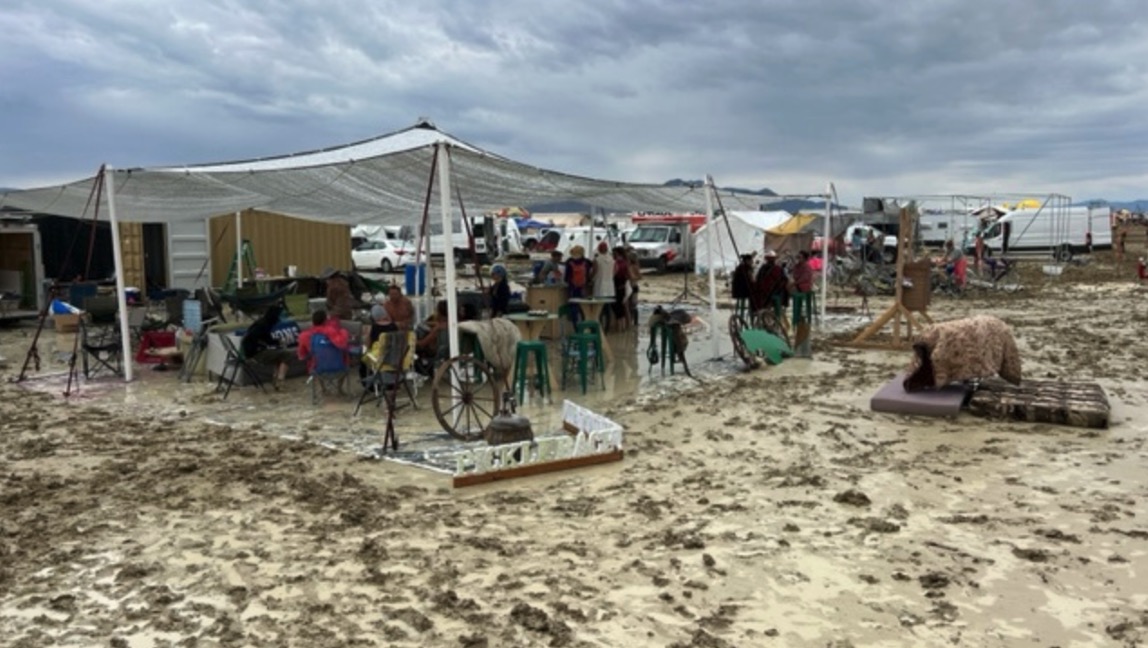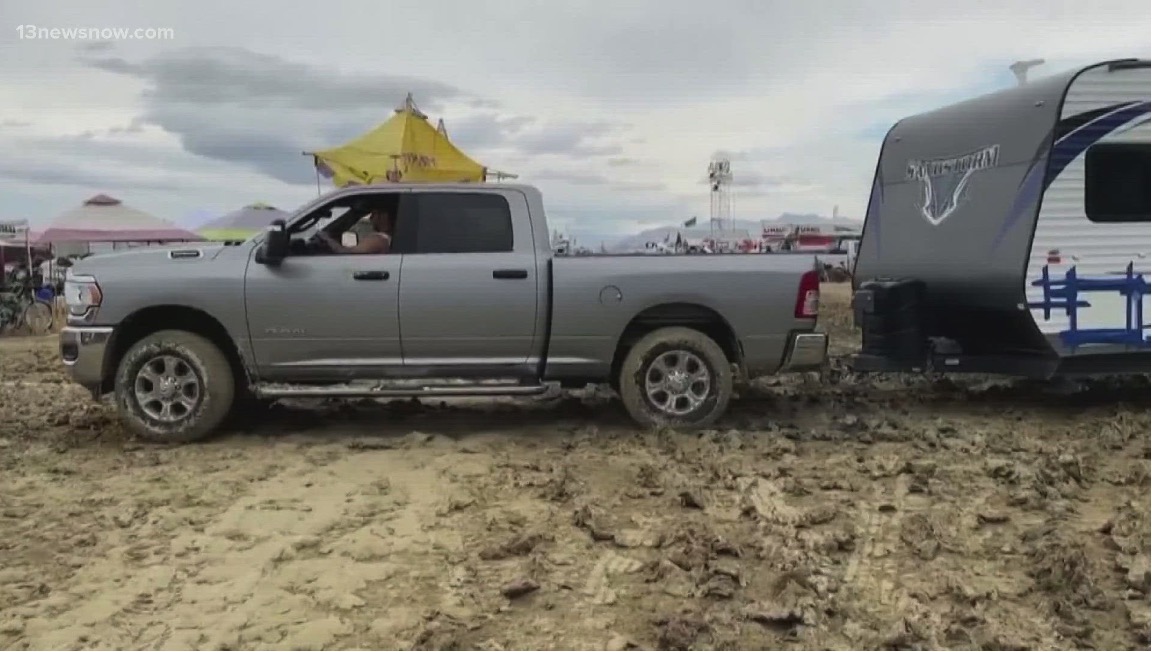Comments
ENVIRONMENTAL WATCH - The 2023 Burning Man Project seems to have started as the other Projects, an escape into the Black Rock Nevada desert wilderness to do whatever they do.
The Project has held little interest for me, until the 2023 iteration when it seems this fantasy escape was discovered by the realities of climate change and global warming, and over the Project weekend the area received in a day about a month’s worth of rain.
The Project became a muddy mess. The Project goers were stuck in mud. Authorities told them to stay in place, and conserve food and fuel. The Project creates a mini-city of around 70,000 people.

At the end of the Project a wooden statue of a man is burned. I don’t know why. I went to the Burning Man Project website, and found: We will always burn the Man.
There are ten principles guiding the Project.
Amongst them:
Radical Self-reliance
Burning Man encourages the individual to discover, exercise and rely on their inner resources.
Leaving No Trace
Our community respects the environment. We are committed to leaving no physical trace of our activities wherever we gather. We clean up after ourselves and endeavor, whenever possible, to leave such places in a better state than when we found them.
And then there is their Mission Statement
From the statement: Finally, in order to accomplish these ends, Burning Man must endure as a self-supporting enterprise that is capable of sustaining the lives of those who dedicate themselves to its work. From this devotion spring those duties that we owe to one another.
For past Projects television news reports would show the people walking around, listening to music, looking at the art, and maybe show the burning of the man. Not too exciting.
The Project has created its own women’s couture. There is a lot of cleavage.
The Project has a strange image of mostly white people going into the desert to be radically self-reliant, walk and bicycle around, look at the art, listen to some music, and then watch the man burn.
I don’t know what it all means. But with this year’s mud bath, the news coverage shifted to the calamities and restrictions on the Project. What was notable in this year's coverage was showing the vehicles used by the Project goers to get into Black Rock Desert before the storm, and the gridlock trying to get out of when the mud dried. Most of the vehicles were large mobile homes, which can go up to 1,400 square feet. The tiny homes used in Los Angeles for the homeless are around 400 square feet.
There were also large pulled campers of similar size to the mobile homes, pulled by large pickup trucks.
The mobile homes and pickup trucks have low gas mileage, which means they release more carbon gases into the atmosphere further contributing to the warming of the planet, leading to the increasing intensity and frequency of storms, such as the one which hit Black Rock Desert and the man to be burned.
This seems to not fit into one of the projects principles, Leaving No Trace
Our community respects the environment.
From internet photos, at night the desert area of the Project is bathed in lights. This sudden blinding infusion of light, and noise from the music, into the wonderfully bleak wilderness can be a damaging intrusion to the wildlife of the area which evolved to live in the quiet, and with very, very dark nights.
Black Rock Desert is isolated, without electricity brought in through poles and wires. The electricity for the bright lights surely must come from generators, which can use carbon-based fuels and blow out of carbon gases.
Then there is the burning of the man. From news reports these statues are large, and there are other structures which are burned in massive flames, creating large plumes of carbon gas smoke. Adding even more heat trapping gases to the atmosphere to warm the planet and create climate catastrophes.
When the Project goers return home, after driving some distances in low mileage vehicles, a question is what is their driving style away from the Burning Man?
Do the large motor homes remain in one place and only used to see the man burn next year, or are they used to travel the roads, and release even more carbon gases into the atmosphere?

Do those large pickup trucks also remain parked for the year until the next Project, or are they driven for everyday use, and throw their own carbon gases into the atmosphere?
The burning of carbon-based fuels affects the local areas, and the entire planet.
The personal inconveniences put upon the people of this year’s Burning Man Project were unpleasant but did not seem life threatening. The life-threatening storms from global warming happen elsewhere on the planet, away from the fantasies of a Burning Man.
Radical self-reliance is a principle of the Burning Man Project, but the project in is reliant upon the burning of carbon fuels. Self-reliant should not mean a fantasy of fun when billions of other people, most of whom are poor, have, and will, suffer more than a weekend inconvenience from climate change, and are facing the destruction and death of the continuing to warm planet and climate change.
In the mission statement: From this devotion spring those duties that we owe to one another.
This duty to one another must exceed the fantasy escape of the Project and move into the realities of the rest of the planet, now careening towards catastrophe. Burning the Man does not help the poor who are in direct contact with global warming.
(Matthew Hetz is a Los Angeles native, a composer whose works have been performed nationally, and some can be found here. He is the past President of the Culver City Symphony Orchestra and Marina del Rey Symphony. His dedication to transit issues is to help improve the transit riding experience for all, and to convince drivers to ride buses and trains to fight air pollution and global warming. He is an instructor at Emeritus/Santa Monica College and a regular contributor to CityWatchLA.)
















